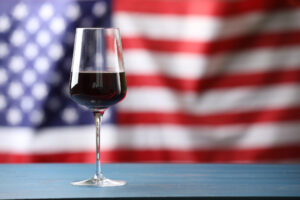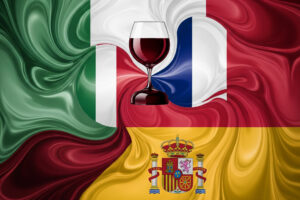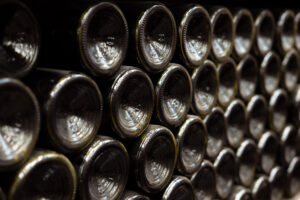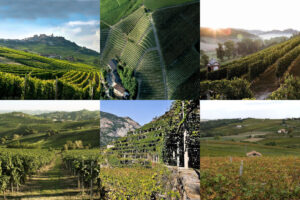<B>In 2023, wine sales in the USA, in general, were down between -2% and -4% compared to 2022. This trend will continue in 2024, for value as well, which has seen a small increase, ranging from stable to +1.5%. It is not a very comforting picture, because barring external shocks, the US economy will probably go into recession.</B> Prices of bottles seem to be holding, even though in general, supply exceeds demand, both in retail and wholesale. It is therefore easy to imagine that to dispose of stocks, both trade and distribution will use discounts and flash sales more and more, especially online, in 2024. <B>More than anything else, though, the alarming fact, which has been confirmed, is that younger people are continuing to marginalize the consumption of wine. In a nutshell, this is what the Silicon Valley Bank “State of the US Wine Industry Report 2024” (now part of the First Citizen Bank Group), edited by Rob McMillan, has revealed. It outlines a definitely less than comforting scenario for the number one world market of wine as well as the number one foreign market for Italian wine. As a matter of fact, in the first 10 months of 2023, Italy’s shipments to the USA decreased -6.8%, to just over 1.4 billion euros. Italy together with France, is the leader among foreign wines, which percentage wise are losing less than National production on the American market. Through September 2023, on a 12-month basis, SipSource showed imports were decreasing -5.9%, while domestic wine sales were down -8.2%. Another disturbing fact is that the drop in sales has been registered in all price ranges. Imported wines were hit hard especially in the range between 11 and 15 US dollars (-6%) and in the above 25 US dollars, registering a double-digit loss, while the price range that has resisted best is between 15 and 25 US dollars, down only -3.8%.</B> The best-selling wines, generally speaking, are varietals such as Chardonnay (15%), Cabernet Sauvignon (14%) and blended reds (11%), but it is definitely decreasing. Pinot Grigio, in fourth place, instead, seems more stable counting on a share of around 9%, according to SipSource data, as mentioned in the report.
<B>The main fact is that Americans drink less wine than before, especially young people, for reasons related to both health and the economy. According to the Wine Market Council survey, the single most important reasons Americans drink less wine are: to drink less alcohol (16.7%), to save money (16.2%), they prefer other drinks (9.8%), and to cut sugar intake (9.3%). Moreover, in the 21 to 49 year old range, the percentage of people who say they drink alcohol, but not wine, is 36%. The “core wine drinkers”, instead, those who drink wine habitually, stand at 23% among the over 70s only, while the range in other population groups is 20% of the 30-39 year olds to 16% of the 21-29 year olds. Additionally, among those who drink alcohol, wine is the favorite drink to consume on convivial occasions, but only in the over 65 group (58% of them indicate wine as their first choice). In the 45 to 54 age group (32% indicated wine, 29% beer), while the 55- 64 age group indicated the same percentage for wine and beer (32%). In the 21 to 34 year old age group 16% indicated wine as their first choice, in terms of preference, which is behind beer (21%), spirits (18%) and even hard seltzers (17%). Beer (30%) is ahead of wine (29%) even in the 35-44 year old age group.</B> Obviously, the budget also affects these choices. According to the average spending index for wine, created by Sovos ShipCompliant, the only population groups where spending had grown in 2023 were the 40 to 70 year olds, and anyway, below +1.8%, while it is dropping in all other age groups, especially the 21-30 age group, where -6% stands out.
<B>There is yet another factor the wine industry, and the beverage industry in general must take into consideration. A Gallup survey has shown that the message repeatedly relaunched by the WHO, namely that there is no safe level of consumption, not even moderate consumption associated to meals, is spreading rapidly, especially among young people. In 2018, in the 21 to 34 age group, those who thought that even moderate drinking was harmful to their health was 34%, now the percentage is 52%, while even among those aged 35 to 54 the percentage rose from 26% to 39%. Those over 55 seemed more impervious; however, the percentage rose from 26% to 29%.</B>
Copyright © 2000/2025
Contatti: info@winenews.it
Seguici anche su Twitter: @WineNewsIt
Seguici anche su Facebook: @winenewsit
Questo articolo è tratto dall'archivio di WineNews - Tutti i diritti riservati - Copyright © 2000/2025








































































































































































































